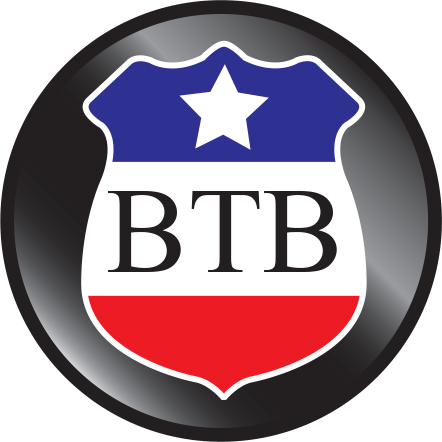In the unforgettable scene in the classic 1994 film “Pulp Fiction,” Uma Thurman’s character, who has overdosed on heroin, instantly is revived after John Travolta’s character stabs her in the heart with a needle full of adrenaline.
Orange County Sheriff’s Department deputies aren’t going Tarantino on anyone, but in a much-less dramatic and invasive fashion, they’re saving the lives of opioid users dying of overdoses thanks to a program the agency pioneered in O.C. that now is spreading to other local police agencies.
Beginning with a trial phase in October 2015 and instituted throughout the department a year later, more than 550 OCSD personnel — including deputies, crime scene and coroner investigators, and Orange County Crime Lab employees — now are equipped with, and trained in the dispensing of, a nasal spray filled with Naloxone, a medication that blocks and reverses the effects of opioids.
So far, OCSD personnel have used Naloxone (sold under the brand name Narcan, in this case) 17 times in the field — typically on heroin users — after rolling to the scene of a medical emergency while waiting for paramedics to arrive.
And so far in 2017, the agency has dispensed Narcan five times.
“You’re standing there watching someone’s life slip away, and you want to do something,” said Lt. Fred Thompson, who oversees the OCSD’s Naloxone Program.
For years, nurses who work in the OCSD’s jails have used needles to inject Naloxone into drug users in the throes of an overdose — those who, like Uma Thurman in the movie, have lost consciousness, are experiencing slowed breathing and who have white fluid, blood and other gross stuff seeping lava-like out of their nostrils and mouth.

OCSD Deputy Robert Rockwell talks about how he has used the Narcan nasal spray twice while on patrol in Stanton. Photo by Steven Georges/Behind the Badge OC
The introduction of Narcan in the easy-to-dispense form of nasal spray has given OCSD deputies another tool when they respond to calls before medics arrive, said Thompson, chief of police services for Laguna Woods and administrative lieutenant for Southwest Operations.
The county pays for the medication (one dose costs about $75), and the OCSD has a prescription from a county physician that allows the agency to administer the nasal spray. Thirty-seven OCSD personnel were selected to train colleagues on its use.
The concept of law enforcement personnel dispensing medication is not new on the East Coast, where many police officers and deputies are cross-trained as paramedics — and hence can dispense medication.
But the use of Narcan nasal spray now is spreading to the West Coast, with law enforcement personnel, after an hour of training, being equipped to blast the medication up a nostril of a person in life-threatening distress.
A law enforcement agency in San Diego County was the first on the West Coast to equip its personnel with the Narcan nasal spray. The OCSD followed.
Now, other agencies throughout Orange County and Southern California — including the Anaheim PD — are using it.
“I think it’s going to expand, with other agencies seeing this as an opportunity (to help save lives),” said Lt. Sean Howell, the OCSD’s chief of police service for Stanton — so far, the epicenter of overdosing drug users in O.C.
Of the 17 times OCSD personnel have administered Narcan, 11 involved overdosing subjects in Stanton.

Lt. Fred Thompson talks about the Narcan nasal spray kit being used by OCSD personnel on people overdosing on opioids.
Photo by Steven Georges/Behind the Badge OC
There were two each in Laguna Niguel, Mission Viejo and Rancho Santa Margarita.
Thirteen of the subjects were male.
Most of the subjects — eight —were in their 20s. The oldest was in his 70s, with an average age of 38.5.
OCSD Deputy Robert Rockwell, who patrols Stanton — which has a large homeless population and many drug users — has administered Narcan twice.
He first dispensed it on a call a few months ago concerning a transient passed out behind a gas station.
“A lot of stuff was coming out of his nose and mouth,” Rockwell said. “He was in bad shape.”
The man was still breathing but not responsive to verbal commands.
“It was obvious he was overdosing on an opioid,” Rockwell said of the man, who was in his 50s.
Rockwell put on black latex gloves and a mask to protect his eyes, nose and mouth, stuck the spray up one of the man’s nostrils, and gave a quick blast.
It took only about a minute for the man to revive. Paramedics arrived, put him on a gurney and whisked him to the hospital.

OCSD Lt. Fred Thompson, left, and Lt. Sean Howell.
Photo by Steven Georges/Behind the Badge OC
“It was very effective,” Rockwell said. “We’re always going to call for (the fire department) in these situations, but this potentially allows us to save someone’s life.”
There’s an opioid epidemic in O.C. and throughout the nation, according to published reports.
In Orange County last year, there were 315 opioid-related overdose deaths — so far.
The coroner still has 53 pending cases, so that number — which includes prescription drugs, illicit drugs or a combination of both — is incomplete.
But the 315 already eclipses the total of 278 in 2015.
Chances are, OCSD deputies — and law enforcement officials throughout O.C. — increasingly are going to be dipping into their “go to” bags in patrol calls to break out the Narcan.
“It’s a great product — it really is,” said OCSD Sgt. Mike Scalise, of the Stanton bureau.
Said Thompson: “We like to catch the bad guys, but we also like to help people in need.”
 Behind the Badge
Behind the Badge



